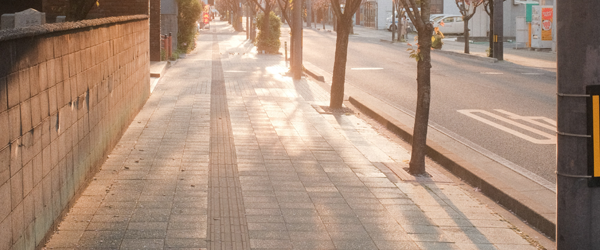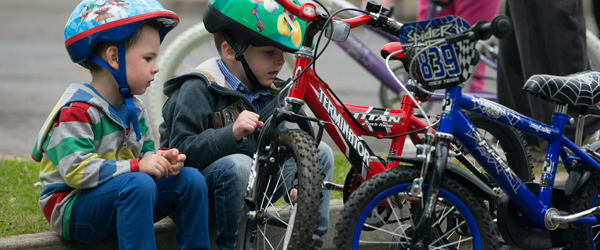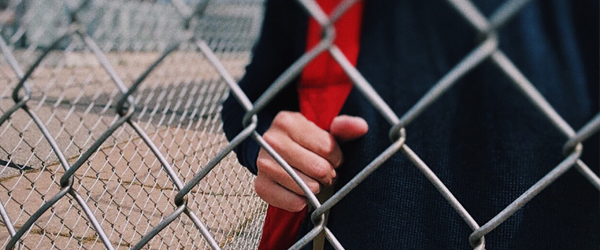
Unfortunately, we are seeing a rise in both physical and sexual assaults of students, while at school, by other students. While we are all familiar with the schoolyard fight, there is a point at which such fights give rise to liability, not only on the part of the assaulter and his or her parents, but also on the part of school officials, including the school district, and supervising teachers. Similarly, when a child is sexually assaulted at school by another child, it is necessary to evaluate the potential liability of the school entities and its employees. When a parent sends a child off to school, it is with the implicit, and sometimes explicit, understanding that the school will keep the child safe throughout the school day. In fact, it has long been held that “[a] special relationship is formed between a school district and its students resulting in the imposition of an affirmative duty on the school district to take all reasonable steps to protect its students…[t]his affirmative duty arises, in part, based on the compulsory nature of education.” (M.W. v. Panama Buena Vista Union School District (2003) 110 Cal.App.4th 508, 517, citing, Rodriquez v. Inglewood Unified School Dist. (1986) 186 Cal.App.3d 707, 714-715, Cal. Const. art. I §28, subd. (c) [students have inalienable right to attend safe, secure and peaceful campuses]; Educ. Code §48200.)
Additionally, there are a myriad of requirements set forth in the California Education Code and the California Code of Regulations that, if not met, can give rise to liability on the part of district employees. Specifically, Education Code §44807 provides: “[e]very teacher in the public schools shall hold pupils to a strict account for their conduct on the way to and from school, on the playgrounds, or during recess.” Pursuant to Cal. Code Regs., tit. 5, §5551 a principal is responsible for the supervision and administration of his school. Also, § 5552 provides, “[w]here playground supervision is not otherwise provided, the principal of each school shall provide for the supervision by certificated employees of the conduct and safety . . . of the pupils of the school who are on the school grounds during recess and other intermissions.” As many incidents occur during recess periods, this statute is particularly useful in establishing the parameters of the liability. The purpose of the foregoing laws is to regulate students’ conduct “so as to prevent disorderly and dangerous practices which are likely to result in physical injury to immature scholars.” (M.W. v. Panama Buena Vista Union School Dist. (2003) 110 Cal.App.4th 508, 517-18 review denied (Oct 01, 2003) [quotations omitted].)
This article will discuss the three main theories of liability in assault and battery cases: 1) negligent supervision of students, 2) negligent hiring training or supervision of district staff and 3) dangerous conditions of public property. Additionally, I have provided a checklist of documents to obtain to properly investigate a school assault and battery case. (More on student-on-student assault is in another blog, here.)
1. NEGLIGENT SUPERVISION CLAIMS
California Government Code §815.2 provides that “[a] public entity is liable for injury proximately caused by an act or omission of an employee of the public entity within the scope of his employment if the act or omission would, apart from this section, have given rise to a cause of action against that employee.” (Cal. Gov. Code §815.2.) In addition, Government Code §820 provides that “a public employee is liable for injury caused by his act or omission to the same extent as a private person.” (Cal. Gov. Code §820.) Thus, there may be direct liability of school district employees such as teachers, hall monitors and school administrators and vicarious liability for the school district. The majority of such cases hinge on 1) what the school personnel should have done, 2) what they did do and 3) what they failed to do.
Most school districts and schools have written materials that address how the business of the safety of students must be conducted. This is generally in the form of an employee handbook or training materials, which have sections devoted to physical altercations and sexual harassment or assault. Many schools also now have a “zero tolerance” policy for students touching each other, even, that which is, as one school administrator described to me, “innocent touching, like hand holding”. Often such manuals will contain the student-teacher playground ratios, and the supervision requirements during recess, and lunch or other times when students will be moving through the halls. As many physical altercations take place during these times, it can be relatively easy to identify whether or not school officials failed to monitor students when they should have been, including whether there were insufficient numbers of school employees present, making adequate supervision impossible. More problematic are sexual assault cases which generally take place out of view in places like restrooms, empty classrooms or other areas obscured from view of supervising school employees. In these cases, the facts must be scrutinized to evaluate the extent of supervision. An important factor in this analysis is the ages of the children being supervised.
The California Supreme Court in the leading case of Dailey v. Los Angeles Unified School Dist. (1970) 2 Cal.3d 741, 747, has aptly stated the rule (codified in Education Code sec. 44807) concerning negligent supervision:
While school districts and their employees have never been considered insurers of the physical safety of students, California law has long imposed on school authorities a duty to “supervise at all times the conduct of the children on the school grounds and to enforce those rules and regulations necessary to their protection.” [Citations.] . ..The standard of care imposed upon school personnel in carrying out this duty to supervise is identical to that required in the performance of their other duties. This uniform standard to which they are held is that degree of care “which a person of ordinary prudence, charged with [comparable] duties, would exercise under the same circumstances.” . . . Either a total lack of supervision or ineffective supervision may constitute a lack of ordinary care on the part of those responsible for student supervision. (Daily, supra, 2 Cal.3d 741, 747.)
Dailey involved unsupervised students who engaged in a “slapboxing” contest which left one student dead. The Court in Daily opined that “our courts have often held that a failure to prevent injuries caused by the intentional or reckless conduct of the victim or a fellow student may constitute negligence. “ (Id. at 749.) Dailey reversed a directed verdict for the defendant school district. The Dailey court also noted that the younger the students, the greater the vigilance required of the school district, especially for pre-high school students. ( Id. at 748.)
The courts in both M.W. v. Panama Buena Vista Union School and Leger v. Stockton Unified School District (1988) 202 Cal.App.3d 1448 similarly held that a cause of action against a school district is viable for the district employees’ negligent supervision of its students and premises. In Leger, the Court found that the defendant district owed a duty of care to plaintiff and as such was liable to plaintiff pursuant to Government Code §§815.2 and 820. The Court’s opinion was based on its finding of a special relationship between the student and the district employees, including the principal and the wrestling coach. (Leger, at 1459.) The Court also analyzed the foreseeability of the harm to the plaintiff, referencing the holding in Peterson v. San Francisco Community College District, 36 Cal.3d at p. 812.)
The Court in Leger further found that as the defendants at issue would have been liable to plaintiff upon the facts pled if they worked in the private sector, the defendant employees were similarly liable pursuant to §§815. 2 and 820. In M.W. v. Panama, supra, the Court held that the school district owed a duty of care to protect the plaintiff from a sexual assault committed by another student. In so holding, the Court opined that “[s]chool districts are subject to well-established statutory duties mandating adequate supervision for the protection of the students…[t]hese affirmative duties arise from the compulsory nature of school attendance, the expectation and reliance of parents and students on schools for safe buildings and grounds, and the importance to society of the learning activity that takes place in schools.” (Id. at 685-686.) Thus, it is well established that a school district owes a duty of care to its students to protect them from sexual assaults. (See also, Virginia G v. ABC Unified School District (1993) 15 Cal.App.4th 1848, 1855-1856.)
In a recent case involving a playground sexual assault, prior to litigation I was able to procure an employee handbook for a particular school which contained the following: “[y]ard duty is a legal responsibility…[c]irculate in the area around your duty location in order to monitor play.” “STUDENTS MUST BE SUPERVISED AT ALL TIMES.” Armed with the school’s internal policy, it was then just a matter of getting the school personnel to admit that there was no excuse for letting a student out of their sight, even for a moment. It was also then easy to point to the specific conduct on the part of the school personnel which violated the school’s own policy, creating an opportunity in which the assault to occur.
2. NEGLIGENT TRAINING, HIRING AND/OR SUPERVISION OF EMPLOYEES.
In many instances, the plaintiff may be able to allege that the incident was facilitated by the school district’s hiring and continued employment of personnel who were neither qualified nor properly trained and as a result were ill-equipped to ensure the safety of the children left in their care.
California Code of Regulations, title 5, §§5551 and 5552 requires the school district and its administrators, such as the principal of a school, to staff common areas, including playgrounds with competent, adequately trained staff. Moreover, school administrators have a continuing duty to supervise such staff members to ensure that they were competently performing their sole job, i.e., protecting the children from harm. It is not sufficient for the school to have a host of rules pertaining to safety and supervision. The school administrator must ensure that such rules are being followed by school employees and that such employees have the requisite knowledge and training to execute the rules. (See, Virginia G. v. ABC Unified School District (1993) 15 Cal.App.4th 1848, [sexual molestation of a student by a teacher; held liability can be imposed on the district based on the negligence of its employees who were responsible for the hiring and/or supervision of the teacher if such employees knew or should have known of the teacher’s history of sexual misconduct with students under his supervision.].)
Defendants will typically rely on the Fourth Districts’ holding in DeVillers v. County of San Diego (2008) 156 Cal.App.4th 238,to assert that no cause of action for “negligent training, hiring or supervision (of a public entity’s employees)” by a public entity can be pursued. However, the Court’s analysis in this case distinguished between direct and vicarious liability. Ultimately, the holding is fact specific in a case where there was a tenuous link between the failures of the district and its employees and the third-party’s conduct.
Oftentimes, the school personnel left in charge of supervising children on the playground or on the lunchroom have little or no training on how to identify or prevent potential dangers and have been provided no instructions on how to keep students in their charge safe.
3. PLEADING A DANGEROUS CONDITION OF PUBLIC PROPERTY.
When an assault and battery occurs on school grounds, out of the direct line of sight of a school employee, investigation into whether the configuration of the premises created a dangerous condition is necessary. In sexual assault cases, many times a child will be lured to a location away from other students and teachers to a location such as behind a fence, a dumpster or hedges—something where an activity can be hidden. In this scenario, the school district will assert that they were in fact supervising the children, yet as the act occurred outside of their view they neither knew or should have known about the conduct.
In these circumstances, a cause of action for dangerous condition of public property can be used to assert that the configuration of the premises created a danger, giving rise to the assault. This can occur on playgrounds where there is a gap in a fence, a high hedge or a misplaced dumpster where children congregate to “hide” from school officials.
California Government Code §835 provides that “a public entity is liable for injury caused by a dangerous condition of its property if the plaintiff establishes that the property was in a dangerous condition at the time of the injury, that the injury was proximately caused by the dangerous condition, that the dangerous condition created a reasonably foreseeable risk of the kind of injury which was incurred, and either: (a) [a] negligent or wrongful act or omission of an employee of the public entity within the scope of his employment created the dangerous condition; or (b) [t]he public entity had actual or constructive notice of the dangerous condition under Section 835.2 a sufficient time prior to the injury to have taken measures to protect against the dangerous condition.” (Cal. Gov. Code §835.)
Pursuant to §835.4, the reasonableness of the public entity’s act or omission creating the condition is determined by “weighing the probability and the gravity of potential injury to persons … foreseeably exposed to the risk of injury against the practicability and cost of taking alternative action that would not create the risk of injury or of protecting against the risk of injury.” (Cal. Gov. Code §835.4.)
Additionally, Government Code §840.2 provides that “[a]n employee of a public entity is liable for injury caused by a dangerous condition of public property if the plaintiff establishes that the property of the public entity was in a dangerous condition at the time of the injury, that the injury was proximately caused by the dangerous condition, that the dangerous condition created a reasonable foreseeable risk of the kind of injury which was incurred, and that either: (a) [t]he dangerous condition was directly attributable wholly or in substantial part to a negligent or wrongful act of the employee and the employee had the authority and the funds and other means immediately available to take alternative action which would not have created the dangerous condition; or (b) [t]he employee had the authority and it was his responsibility to take adequate measures to protect against the dangerous condition at the expense of the public entity and the funds and other means for doing so were immediately available to him, and he had actual or construction notice of the dangerous condition under Section 840.04 a sufficient time prior to the injury to have taken measures to protect against the dangerous condition.” (Cal. Govt. Code §840.2.)
In these cases, it is important to visit the location where the incident occurred and visually observe what a vigilant school employee could have seen, if they were paying proper attention. It is also important to establish whether the location at issue was, in fact, a location used by students to avoid detection by staff, even if the prior use was for relatively innocuous behavior. Most school personnel tasked with supervising students will admit that there are warning signs that students are either engaging in a prohibited activity like fighting or bullying, or about to engage in such behavior. These warning signs include, groups of students congregating in one area, a group of students who suddenly disappear from the supervisor’s sightline, with one or two students acting as a lookout, and excessive noise. These warning signs should give rise to the school personnel investigating the activity and stopping it before it starts.
4. NOTIFICATION OF PARENT
It is an unfortunate set of events which leads school personnel to fail to disclose a physical or sexual assault to a child’s parents. The school district will generally fall back on the defense that it had no idea that anything occurred, using their feigned ignorance as an overall defense. As discussed above, if the school district takes the ostrich with their head in the sand approach, this can be compelling evidence of a failure to supervise.
Additionally, where the school district fails to report such violence to a student’s parents, the Courts have found that this may give rise to an independent cause of action on the part of the parents. In the case of Phyllis P. v. Claremont Unified School District (1986) 183 Cal.App.3d 1193, which involved an allegation of sexual molestations at school by a fellow student, the plaintiffs alleged that the school district had learned of the incident but decided not to inform the victim’s mother. The trial court sustained the defendant’s demurrer. The Court of Appeal reversed the ruling of the trial court and held that as the defendants stood in a special relationship to the victim and to her mother, the injuries to the mother were foreseeable and as such the defendants had a duty to inform the mother after learning of the molestation. The Court further opined that the district should have foreseen that withholding the information from the mother would cause more emotional distress. The Court also held that the mother’s cause of action was properly based on her status as a direct victim of defendants’ negligence, and was not derivative of her daughter’s injury. (Phyliss P, supra, 183 Cal.App.3d 1193, 1196-1197.)
Many parents report having continued distress and apprehension following such an incident as they not only no longer trust the school personnel to care for their children, but fear the worst that if something does happen to their child, the school will hide it. This is a crushing realization to a parent who has no choice but to relinquish their child into the hands of a school for a majority of their child’s life, with no reassurance that their child will remain safe.
5. PRE-LITIGATION INVESTIGATION
Before taking on any case against a public entity, it pays to heavily investigate the case beforehand. Take advantage of the virtually free information available through public records act requests which can help you get the following:
a) School protocols and procedures regarding supervision, safety, training of employees and policies on acceptable/unacceptable behavior between students;
b) Training manuals/handbooks which may outline the duties and responsibilities of the school and its personnel with respect to students, including to provide a safe and effective learning environment, complying with district and state policies and regulations, safety of students, monitoring behavior/common areas, recess etc, assessing signs of sexual abuse;
c) Administrative regulations for city/county –student safety, playground safety etc.;
d) “Touching” or “sexual assault” policies—most = “zero tolerance” even for “innocent touching”;
e) Disciplinary policies for students who violate rules;
f) Child abuse prevention policies and training;
g) Prior instances of violence at the school
CONCLUSION
Cases involving injuries to children are always emotionally charged. In taking on such cases, while it might seem intuitive that a child would not have been injured if the school district and its employees were doing their jobs, in order to prevail you must be able to point to specific conduct, or failures on the part of the district and its employees that either caused or contributed to the incident.
Receive new blogs via email:
[email-posts-subscribers namefield=”YES” desc=”Subscribe to receive our blogs in your inbox!”]
Government Code section 830 defines a “dangerous condition” as “a condition of property that creates a substantial… risk of injury when such property or adjacent property is used with due care in a manner in which it is reasonably foreseeable that it will be used.”
Section 835.2(a) sets forth: “[a] public entity had actual notice of a dangerous condition …if it had actual knowledge of the existence of the condition and knew or should have known of its dangerous character. Section 835.2(b) defines constructive notice as such condition which existed for such a period of time which was of such an obvious nature that the public entity should have discovered the condition and its dangerous condition. Admissible evidence on the issue of constructive notice includes whether the condition would have been discovered by a reasonably adequate inspection system to inform the public entity whether the property was safe for its use . (See, Cal. Gov. Code section 835.2.)




 School is back in session and just like you, your child is a commuter. You may drive your child to school and give them a quick tuck-and-roll drop-off, or they may ride the bus, but some still pedal their way among the throngs of cars, pedestrians, and other cyclists. Or, you may have children who only cycle at home afterschool and on weekends. In either case, we wanted to share with you 5 rules every parent should know when letting their child ride their bike in San Francisco. Children under 14 accounted for 37% of all fatal bicycle accidents in 2015 and San Francisco is still in the top 13 cities in the entire United States for bicycle fatalities with motor vehicle collisions. It is important for parents to be vigilant.
School is back in session and just like you, your child is a commuter. You may drive your child to school and give them a quick tuck-and-roll drop-off, or they may ride the bus, but some still pedal their way among the throngs of cars, pedestrians, and other cyclists. Or, you may have children who only cycle at home afterschool and on weekends. In either case, we wanted to share with you 5 rules every parent should know when letting their child ride their bike in San Francisco. Children under 14 accounted for 37% of all fatal bicycle accidents in 2015 and San Francisco is still in the top 13 cities in the entire United States for bicycle fatalities with motor vehicle collisions. It is important for parents to be vigilant. Back-to-School is a busy season for students and parents, but after the initial excitement starts to settle sometimes the tension boils over between students and we unfortunately begin to see the rise in physical and sexual assaults of students by other students while at school. We all want what is best for the children in our care and physical and sexual assaults should never be tolerated. When something more than pride is damaged, the assaulter, his/her parents, and the supervising teachers, school officials, school employees, and even the school district may be responsible. It is necessary to evaluate the situation which is why it is best to speak to a personal injury lawyer as soon as possible.
Back-to-School is a busy season for students and parents, but after the initial excitement starts to settle sometimes the tension boils over between students and we unfortunately begin to see the rise in physical and sexual assaults of students by other students while at school. We all want what is best for the children in our care and physical and sexual assaults should never be tolerated. When something more than pride is damaged, the assaulter, his/her parents, and the supervising teachers, school officials, school employees, and even the school district may be responsible. It is necessary to evaluate the situation which is why it is best to speak to a personal injury lawyer as soon as possible.